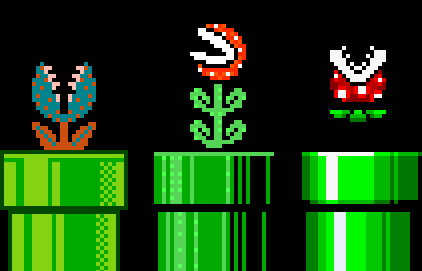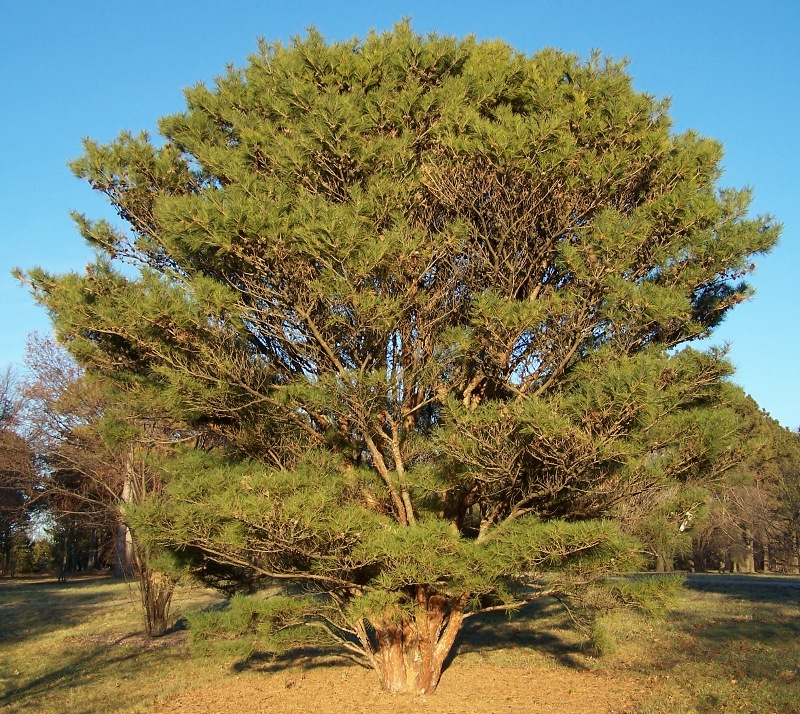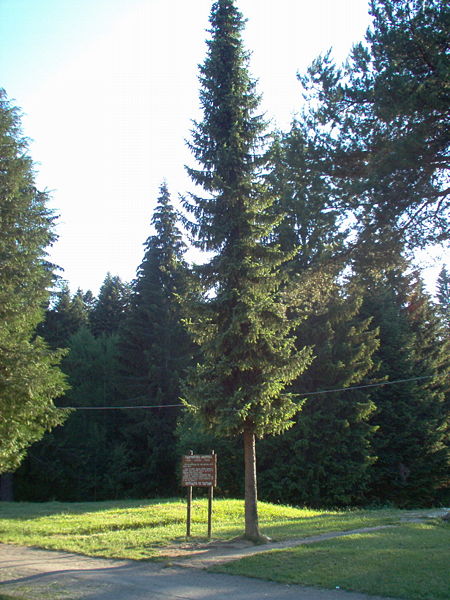Latin Name: Cryptomeria japonica 'Sekkan-sugi'
Common Name: Japanese cedar
Family: Cupressaceae
Origin: Japan
Tree/Shrub/Herb: Coniferous tree
Form: Columnar
Habit: Dense in juvenility becoming less so with age
Leaves: Needles arranged spirally, dense
Fruit: Globular, 1-2cm, 20-40 scales
Stem/Bark: Red/brown bark peeling in vertical strips
Cultural Requirements: Well drained, poor-to-average soil, sunny, hot, dry
Landscape Uses: Large garden tree, park tree
Notes: This is the national tree of Japan
Latin Name: Cryptomeria japonica 'Elegans'
Common Name: Japanese cedar
Family: Cupressaceae
Origin: Japan
Tree/Shrub/Herb: Coniferous tree
Form: Pyramidal
Habit: Lightly drooping branches
Leaves: Thin needles, develops a burnished colour in winter
Fruit: Globular, 1-2cm, 20-40 scales
Stem/Bark: Red/brown bark peeling in vertical strips
Cultural Requirements: Well drained, poor-to-average soil, sunny, hot, dry, needs more water
Landscape Uses: Large garden tree, park tree
Notes:Less hardy than Sekkan-sugi, susceptible to snow damage
Latin Name: Pinus parviflora
Common Name: Japanese white pine
Family: Pinaceae
Origin: Japan
Tree/Shrub/Herb: Coniferous tree
Form: Irregular
Habit: Open windswept
Leaves: 5 needled, white stomatal band, contorted nature
Fruit: 4-7 cm long with rounded scales
Stem/Bark: Grey-brown bark
Cultural Requirements: Well drained, poor-to-average soil, sunny, hot, dry
Landscape Uses: Large garden tree, park tree
Notes: Sometimes grafted
Latin Name: Pinus sylvestris
Common Name: scots pine
Family: Pinaceae
Origin: Eurasia
Tree/Shrub/Herb: Coniferous tree
Form: Irregular
Habit: Open windsweptLeaves: 2 needles, sharp, whorled, bluish tinge
Fruit: Ovoid cones, 3-7cm
Stem/Bark: Platy orangish bark
Cultural Requirements: Well drained, poor-to-average soil, sunny, hot, dry
Landscape Uses: Large garden tree, park tree
Notes: NOT Scotch pine!
Latin Name: Pinus densiflora
Common Name: tanyosho pine
Family: Pinaceae
Origin: Japan, Korea, China
Tree/Shrub/Herb: Coniferous tree
Form: Round topped
Habit: Multi stemmed
Leaves: 2 needled, soft
Fruit: Femal cones cluster on inner branches
Stem/Bark: Platy orangish bark
Cultural Requirements: Well drained, poor-to-average soil, sunny, hot, dry
Landscape Uses: Large garden tree, park tree
Notes: Can be trained by candle pruning
Latin Name: Pinus thunbergii
Common Name: Japanese black pine
Family: Pinaceae
Origin: Japan and South Korea
Tree/Shrub/Herb: Coniferous tree
Form: Irregular, broadly conical
Habit: Horizontal branching
Buds: Terminal buds unique, pointed capsule shape, white
Leaves: 2 needled, pointy
Fruit: 4-7cm long, points on tips of scales
Stem/Bark: Grey brown bark
Cultural Requirements: Well drained, poor-to-average soil, sunny, hot, dry
Landscape Uses: Large garden tree, park tree
Notes: Resistant to pollution and salt
Latin Name: Picea omorika
Common Name: Serbian spruce
Family: Pinaceae
Origin: Serbia
Tree/Shrub/Herb: Coniferous tree
Form: Upright, stiff
Habit: Narrow and tall
Leaves: Spirally arranged, 2 lines of stomata
Fruit: 4-7 cm, spindle shaped, purplish
Stem/Bark: Platy reddish bark
Cultural Requirements: Well drained, poor-to-average soil, sunny, hot, dry
Landscape Uses: Large garden tree, park tree
Notes: Has a very small native habitat of only 60ha
Latin Name: Juniper squamata 'Meyeri'
Common Name: Meyer's juniper
Family: Cupressaceae
Origin: Himalayas, China, Afghanistgan
Tree/Shrub/Herb: Coniferous tree
Form: Irregular
Habit: Upright, sprawling
Leaves: Clusters of many short, bluish awls
Stem/Bark: Red/orange stems
Cultural Requirements: Well drained, poor-to-average soil, sunny, hot, dry
Landscape Uses: Large garden shrub
Notes: Can grow to 15m tall under perfect conditions
Latin Name: Pinus nigra
Common Name: Austrian pine
Family: Pinaceae
Origin: Southern Mediterranean
Tree/Shrub/Herb: Coniferous tree
Form: Conical
Habit: Regularly tiered branching
Leaves: 2 needles, 4"-6" long
Fruit: Yellow-brown cones, 2"-3" long
Stem/Bark: Grey-brown platy bark
Cultural Requirements: Well drained, poor-to-average soil, sunny, hot, dry
Landscape Uses: Large garden tree, park tree
Notes: This is a very common plant in the local landscape
Latin Name: Pinus ponderosa
Common Name: ponderosa pine
Family: Pinaceae
Origin: Western North America
Tree/Shrub/Herb: Coniferous tree
Form: Broadly conical
Habit: Horizontal branching with needle growth in tufts
Leaves: 3 needles, long, in tufts
Fruit: Oval, 7-14cm, sharp prickle at top of scales
Stem/Bark: Reddish platy bark
Cultural Requirements: Well drained, poor-to-average soil, sunny, hot, dry
Landscape Uses: Large garden tree, park tree
Notes: Susceptible to fungal diseases
Latin Name: Pinus coulteri
Common Name: Coulter pine
Family: Pinaceae
Origin: Southwestern North America
Tree/Shrub/Herb: Coniferous tree
Form: Broadly conical
Habit: Irregularly shaped secondary branches
Leaves: 3 needles, somewhat bluish, very long
Fruit: Enormous cones which are an overhead hazard
Stem/Bark: Red furrowed bark
Cultural Requirements: Well drained, poor-to-average soil, sunny, hot, dry
Landscape Uses: Large garden tree, park tree
Notes: Named after Irish botanist Thomas Coulter
Latin Name: Cedrus atlantica
Common Name: blue atlas cedar
Family: Pinaceae
Origin: Northern Africa
Tree/Shrub/Herb: Coniferous tree
Form: Broadly conical
Habit: Upward sweeping primary branching
Leaves: Needles in clusters on short shoots, bluish colour
Fruit: Held upright, 6-8cm
Stem/Bark: Grey-brown bark
Cultural Requirements: Well drained, poor-to-average soil, sunny, hot, dry
Landscape Uses: Large garden tree, park tree
Notes: A wet winter/spring will cause fungal diseases in this plant
Latin Name: Araucaria araucana
Common Name: monkey puzzle tree
Family: Araucariaceae
Origin: Chile and Argentina
Tree/Shrub/Herb: Coniferous tree
Form: Regular, pyramidal
Habit: Uniform branching pattern with secondary branches turning upwards near terminal end
Leaves: Thick, triangular, scale like, 3-4 cm long
Fruit: Males cones pendulous, female cones erect
Stem/Bark: Grey bark with vertical striations and horizontal ridges
Cultural Requirements: Well drained, poor-to-average soil, sunny, hot, dry
Landscape Uses: Large garden tree, park tree
Notes: This plant is dioecious and is susceptible to phytophthera
Latin Name: Pinus banksiana
Common Name: jack pine
Family: Pinaceae
Origin: Northern North America
Tree/Shrub/Herb: Coniferous tree
Form: Irregular
Habit: Often has multiple leaders, irregular branching, twiggy
Leaves: 2 needles, twisted, yellow-green, 2-4cm long
Fruit: 5cm long cones, curved at tip
Stem/Bark: Grey/brown platy bark
Cultural Requirements: Well drained, poor-to-average soil, sunny, hot, dry
Landscape Uses: Large garden tree, park tree
Notes: Named after Sir Joseph Banks
Latin Name: Pinus jeffreyi
Common Name: Jeffrey pine
Family: Pinaceae
Origin: Western North America
Tree/Shrub/Herb: Coniferous tree
Form: Broadly conical
Habit: Short twigs on longer primary branching
Leaves: 3 needles, bluish tinge
Fruit: 12-24cm long, purplish when immature, maturing to brown, sharp inward pointing barb
Stem/Bark: Brown-red platy bark
Cultural Requirements: Well drained, poor-to-average soil, sunny, hot, dry
Landscape Uses: Large garden tree, park tree
Notes: Named after Scottish botanist John Jeffery
Latin Name: Pinus strobus
Common Name: eastern white pine
Family: Pinaceae
Origin: Eastern North America
Tree/Shrub/Herb: Coniferous tree
Form: Broadly conical, windswept
Habit: Whorled horizontal branching
Leaves: 5 needles, flexible, bluish-green, 5-13 cm long
Fruit: Female cones 8-16cm long, scales have rounded apex and reflexed tip
Stem/Bark: Grey platy bark
Cultural Requirements: Well drained, poor-to-average soil, sunny, hot, dry
Landscape Uses: Large garden tree, park tree
Notes: This plant is beginning to naturalize itself in the Carpathian Mountains
Latin Name: Picea sitchensis
Common Name: Sitka spruce
Family: Pinaceae
Origin: Western North America
Tree/Shrub/Herb: Coniferous tree
Form: Conical
Habit: Regular branching pattern of horizontal secondary branches
Leaves: 2 lines of stomata, whorled around stems, bluish tinge
Fruit: Pendulous, cylindrical, 6-10cm
Stem/Bark: Platy grey-brown bark
Cultural Requirements: Well drained, poor-to-average soil, sunny, hot, dry
Landscape Uses: Large garden tree, park tree
Notes: Native habitat only extend a few kilometres from the ocean
Latin Name: Abies koreana
Common Name: Korean fir
Family: Pinaceae
Origin: Korea
Tree/Shrub/Herb: Coniferous tree
Form: Regular and tight
Habit: Branched close to ground, upward tilting stems
Leaves: Whorled, flat, dimpled tip, 2 thick stomatal bands
Fruit: Erect, resinous, purple colour, scales shed while still attached to tree
Stem/Bark: Grey-brown bark
Cultural Requirements: Well drained, poor-to-average soil, sunny, hot, dry
Landscape Uses: Large garden tree, park tree
Notes: Has become endangered in the wild
Latin Name: Cedrus deodara
Common Name: deodara cedar
Family: Pinaceae
Origin: Himalayas
Tree/Shrub/Herb: Coniferous tree
Form: Somewhat irregular, broadly conical
Habit: Ascending secondary branching, drooping leader
Leaves: Short needles clustered at the ends of short shoots
Fruit: Barrel shaped, 7-13cm long
Stem/Bark: Grey-brown bark
Cultural Requirements: Well drained, poor-to-average soil, sunny, hot, dry
Landscape Uses: Large garden tree, park tree
Notes: No rust problems like C. atlantica


















No comments:
Post a Comment